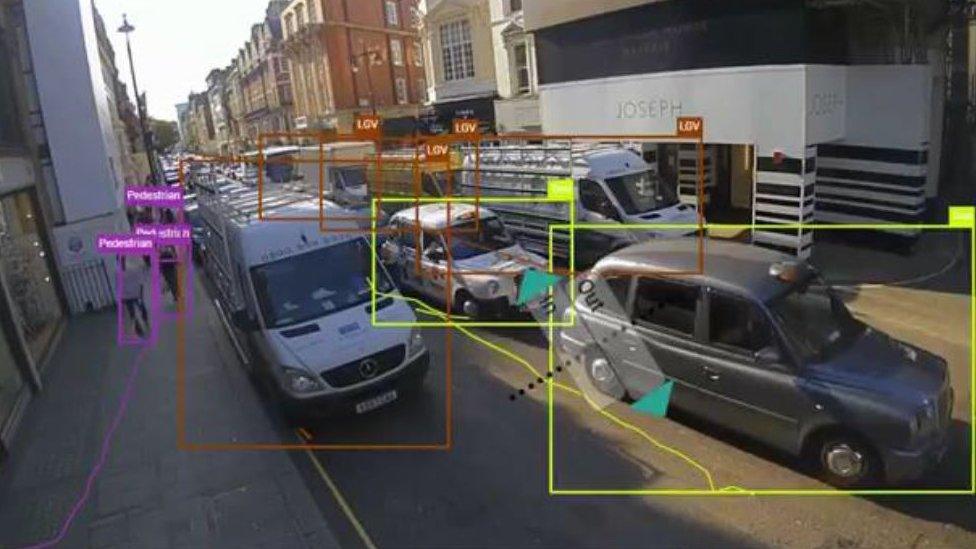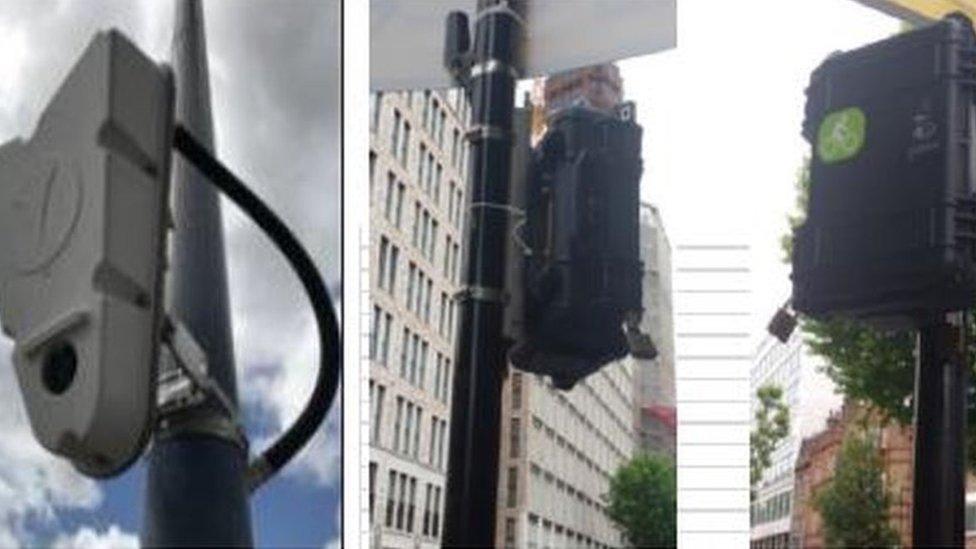Smart cities: How data and artificial intelligence could change London
- Published
- comments

It is thought planners could use the data to improve traffic hotspots
With growing pressure to cut carbon emissions and reduce the number of vehicles on the road, some small cameras could help provide the answer to London's emission woes.
You could easily miss it.
It's a small triangular grey box high up on a lamp-post but it could hold the key to big changes on London's streets.
These are scanners counting who is using the road and how.
The computer is learning all the time, so much so that it has a 98% accuracy rate in identifying vehicles and people.
Previously, transport planners used people to do manual data counts which were more unreliable and could only provide a snapshot of who was using the road.
The new system can run 24 hours a day, seven days a week and is part of what is called the "smart city" revolution.
Radically change
As cities try to encourage environmental forms of getting around such as walking and cycling, many are being redesigned to make that easier and safer.
In London, the mayor's Transport Strategy, external has a target of 80% of journeys in London to be made by walking, cycling and public transport by 2041.
Using the data from these scanners, planners would be able to change streets and target investment.

The cameras are in operation all the time
For example on a feed of Millbank, it becomes obvious from the data that hardly any pedestrians use the pavement by the river. Is there a barrier to pedestrians getting there? Should there be a pedestrian crossing?
If the data shows high numbers of cyclists on one road, could investment be targeted there to provide a bike lane? If buses are being held up at a junction, could that be redesigned?
There is also the potential to link up the scanners to traffic signals to manage demand on the network.
Transport for London (TfL) says all the video, which is part of a two-year trial with Vivacity, is discarded within seconds, meaning no personal data is stored.
Glynn Barton, TfL's director of network management, said: "We're always looking for innovative new ways of making our roads safer and more efficient.
"New data from trials such as this will be really valuable as we invest and make day-to-day decisions to enable more people to walk and cycle."
It is early days but the use of this kind of data has the potential to radically change London's streetscapes.
Other cities will be watching closely.
- Published20 January 2020
- Published30 January 2018
- Published5 June 2015

